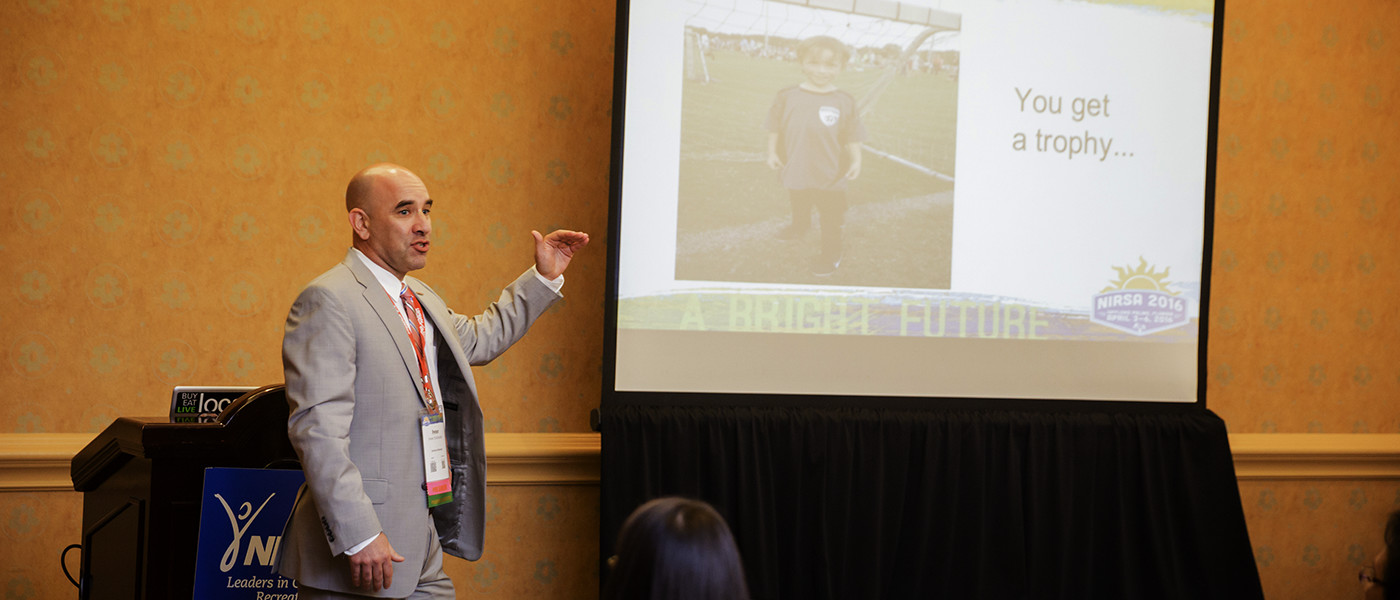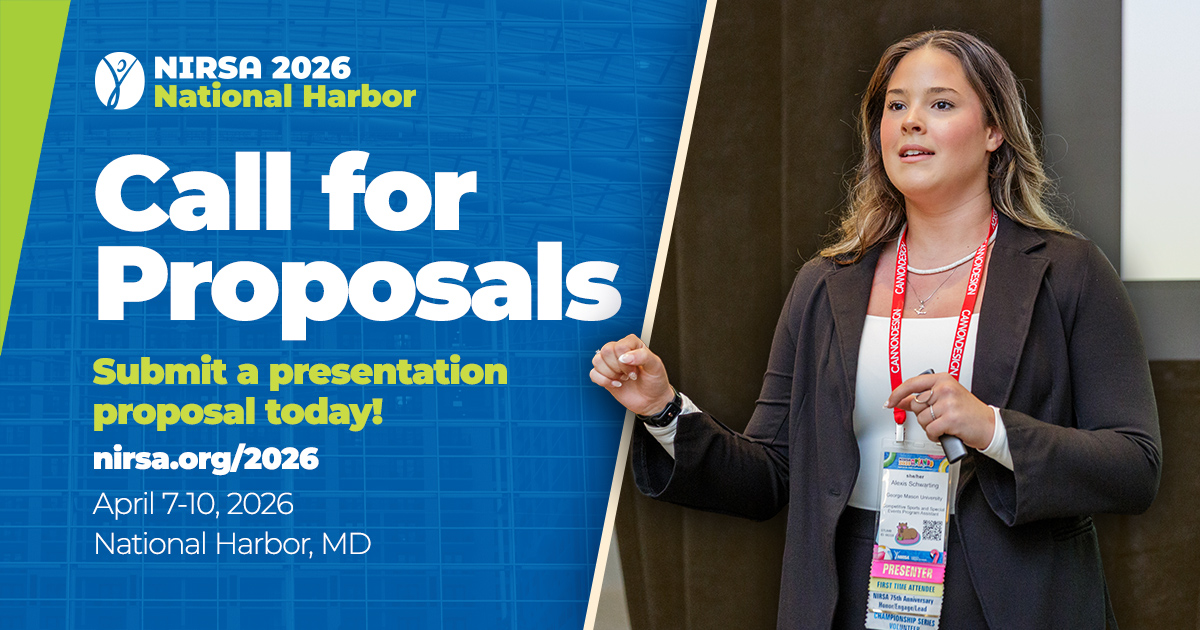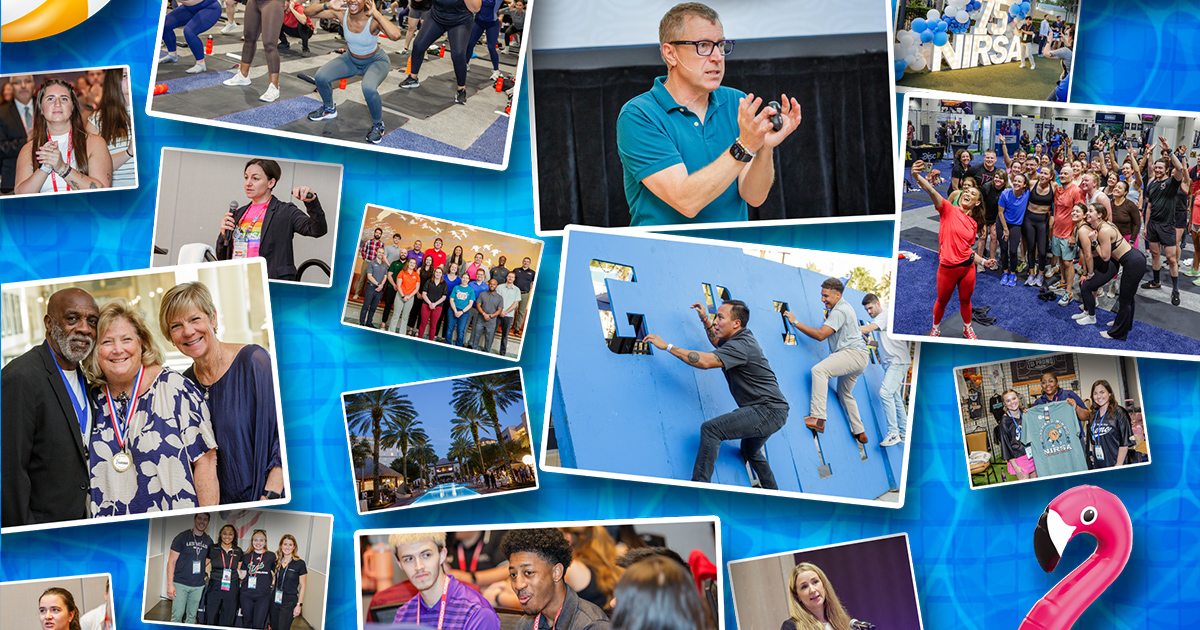If you attended the 2016 NIRSA Annual Conference in Kissimmee, Florida, you may have seen the words PechaKucha and asked yourself “What is a PechaKucha?” A typical response I received when just saying the phrase PechaKucha was “Can you repeat that?” or “PechaKucha what?”
I had no idea what the format consisted of when I agreed to take on the challenge of creating a PechaKucha presentation. It was one of those moments where I said to myself “Sure, I can do that.” Then, when I was in front of an audience, I thought to myself, “What did I just get myself into?” Sometimes, the best experiences require taking a leap of faith. I would absolutely do my PechaKucha presentation again. There are definitely things that can help make your experience presenting in this format a success and I want to share what I’ve learned.
PechaKucha means chit-chat in Japan where the format originated. A PechaKucha is a simple presentation format where you show 20 images, each for 20 seconds. The images advance automatically and you talk along to them. The idea behind PechaKucha is to stay on topic, to be verbally concise, and to be creative with the material being presented.
I am sure we have all been guilty of talking about a topic longer than the audience truly needs or, in most cases, has the attention span to remain engaged. The PechaKucha solves this problem by providing the audience with visually-stimulating material and information that is crucial before advancing to the next slide. The audience is eager to know what’s coming up next and soon they’re fully absorbed in the presenter’s story.
I know in the description it states that it is a “simple” presentation format. And it is in concept. Twenty slides total for twenty seconds each for a total presentation of 6 minutes and 40 seconds sounds like a piece of cake, right? Well…it’s maybe not quite as easy as a piece of cake. I want to be clear: I am not a PechaKucha expert. But I did present the format at NIRSA 2016 and I want to share with you four key components that I believe made a difference in putting the entire presentation together.
- Tell a story with the presentation to evoke emotion in the audience
We remember stories because they often create a feeling within us that connects us to the material and to the presenter. It should have an introduction, middle, and conclusion. - Use visual images on the slides and as few words as possible
A relevant image that coincides with the information will help shape the story in the minds of the audience. - Determine what is the most important information you want your audience to remember
Get rid of the “extra” that the audience really doesn’t need; this will allow you to be clear and concise with your words. - Practice, practice, and practice even more.
Practicing the 20 seconds for each of the slides will help you trim the material and give the audience only the vital information. Practice a story-like pace that has a rhythm to it and takes the audience on a journey for 6 minutes and 40 seconds.
Looking back, the PechaKucha format was a challenge. It required me to be very intentional with the material and critically think about what I wanted the audience to be engaged in throughout the six minutes and forty seconds. It prompted me to practice and not rely on my ability to just “wing it.” It also put into practice what we teach our students about leadership and development, which is that in order to grow we need to challenge ourselves. And the PechaKucha format is a perfect way to be challenged as a professional. So consider submitting a PechaKucha for NIRSA 2017!
- For more information, please contact NIRSA Director of Professional Development Kristen Gleason.
Mila Padgett is currently the Director of Campus Recreation & Wellness at the University of South Carolina Aiken. She is President Elect on the NIRSA Board of Directors.








